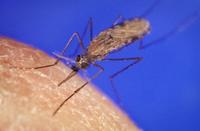-
Three infected Liberian health workers receive rare Ebola serum
Three Liberian health care workers who have been infected with the Ebola virus while treating patients, have on Friday received a scarce experimental serum – Zmapp — at a hospital outside the national capital, Monrovia, the Liberian capital. This is the same serum given to two American workers, Dr. Kent Brantly and Nancy Writebol, who contracted Ebola while working at ELWA Hospital in Monrovia. Brantly and Writebol were evacuated to Emory University Hospital in Atlanta, where they have been showing promising signs of recovering from the disease. Mapp Biopharmaceutical of San Diego, which provided the drug, said the “available supply of ZMapp has been exhausted.”
-
-
U.S. sends 50 epidemics expert to West Africa in an effort to contain out-of-control outbreak
The United States has announced plans to send at least fifty public health and epidemics experts to West Africa to help in the desperate effort to contain the worst-ever outbreak of Ebola. Senior U.S. and European health officials said the outbreak is now out of control, but insisted it could still be stopped. The Ebola outbreak has so far claimed more than 700 lives in Guinea, Liberia, Sierra Leone, and Nigeria. The current mortality rate is about 55 percent.
-
-
Wiping out malaria-carrying mosquitoes with male-only offspring

Over 3.4 billion people are at risk from contracting malaria, and an estimated 627,000 people die each year from the disease. Scientists have modified mosquitoes to produce sperm that will only create males, pioneering a fresh approach to eradicating malaria.
-
-
No-refrigeration, spray vaccine to help fight diseases in remote areas
A new kind of single-dose vaccine that comes in a nasal spray and does not require refrigeration could dramatically alter the public health landscape — get more people vaccinated around the world and address the looming threats of emerging and re-emerging diseases.
-
-
Positive safety results Marburg drug candidate announced
Marburg hemorrhagic fever is a severe and potentially fatal disease in humans first recognized in 1967. It is caused by an RNA virus of the Filoviridae family and is understood to be endemic to Africa. The Marburg virus is classified as a Category A bioterrorism agent by the Centers for Disease Control and Prevention (CDC), and in 2006 was determined by DHS to be a material threat to national security and public health. There are currently no treatments for Marburg virus infection beyond supportive care. Cambridge, Massachusetts-based Sarepta Therapeutics, a developer of innovative RNA-based therapeutics, announced positive safety results from a Phase I multiple ascending dose study of AVI-7288 in healthy volunteers. AVI-7288 is the company’s lead drug candidate for the treatment of Marburg virus infection.
-
-
New malaria vaccine offers a new mode of protection
Malaria kills more than 660,000 people each year, most of whom are children in Africa. A novel malaria vaccine developed at Oxford University has shown promising results in the first clinical trial to test whether it can protect people against the mosquito-borne disease.
-
-
Rapid detection of superbugs
Scientists developed an array that could test for 116 antibiotic resistant genes from one class of bacteria, and 90 resistant genes from the other class of bacteria. This new lab test detects antibiotic resistance genes quickly, helping doctors choose the right drugs to knock out superbugs.
-
-
Stopping malaria transmission
Malaria is preventable and treatable. Yet, according to the World Health Organization, an estimated 219 million malaria cases occurred globally in 2010. The disease killed about 660 000 people, most of them children under five years of age, at the same time that increasing drug resistance might soon limit treatment options. Researchers say that to eradicate this disease, there is a need to look beyond treatment, and seek drugs that block transmission between humans and mosquitoes.
-
-
Lying in wait: Anthrax toxin may lurk for days in cells as a lingering threat
An anthrax infection can be fatal even when the infectious agent is no longer detected. The bacterium responsible for anthrax develops a strategy reminiscent of the Trojan horse tale. Its pathogenic factor is able to penetrate inside a cell in such a way that it becomes completely invisible to both the immune system and medical analysis. Furthermore, it manages to exit the cell several days later, and then it continues to poison other cells.
-
-
Discovery points way to treatment of lethal toxin botulism

Botulinum neurotoxins are produced by Clostridium botulinum and cause the possibly fatal disease botulism, which impedes nerve cells’ ability to communicate with muscles and can lead to paralysis and respiratory failure. The botulinum toxin has also been identified as a potential biological weapon against a civilian population. Scientists have decoded a key molecular gateway for the toxin that causes botulism, pointing the way to treatments that can keep the food-borne poison out of the bloodstream.
-
-
Irradiated mosquitoes provide malaria vaccine
A new malaria vaccine is derived from mosquitoes that have been irradiated but not killed. The radiation critically weakens the malaria parasite, Plasmodium falciparum, which is extracted from the insects’ salivary glands and administered intravenously to subjects.
-
-
Superbug crisis shows progress in antibiotic development “alarmingly elusive”
Despite the desperate need for new antibiotics to combat increasingly deadly resistant bacteria, the U.S. Food and Drug Administration (FDA) has approved only one new systemic antibiotic since the Infectious Diseases Society of America (IDSA) launched its 10 x ’20 Initiative in 2010 — and that drug was approved two and a half years ago.The IDSA says that time is running out for meeting the IDSA Goal of ten new antibiotics by 2020.
-
-
Schools do not offer students sufficient practical science experience

New evidence shows that a worrying number of students are not experiencing a complete and authentic education in the sciences, due to a lack of resources for practical work. Secondary schools reported not having enough of some of the most commonly used equipment, such as microscopes, eye protection, and connecting leads for circuits. The research also shows that many secondary schools lack essential support from qualified technicians to carry out practical work.
-
-
Debate rages over U.S. purchases of smallpox medicine
The U.S. government paid Siga Technologies $463 million to buy enough smallpox drugs to treat two million people. Expert sharply disagree about the wisdom of the move: some say it was a reasonable purchase at a reasonable price, while others say the government purchased too large a quantity of the drug and too high a price.
-
-
Researchers trick bacteria to generate a safer vaccine
Vaccines which employ weakened but live pathogens to trigger immune responses have inherent safety issues but Yale researchers have developed a new trick to circumvent the problem — using bacteria’s own cellular mistakes to deliver a safe vaccine.
-
More headlines
The long view
Vaccine Integrity Project Says New FDA Rules on COVID-19 Vaccines Show Lack of Consensus, Clarity
Sidestepping both the FDA’s own Vaccines and Related Biological Products Advisory Committee and the CDC’s Advisory Committee on Immunization Practices (ACIP), two Trump-appointed FDA leaders penned an opinion piece in the New England Journal of Medicine to announce new, more restrictive, COVID-19 vaccine recommendations. Critics say that not seeking broad input into the new policy, which would help FDA to understand its implications, feasibility, and the potential for unintended consequences, amounts to policy by proclamation.
